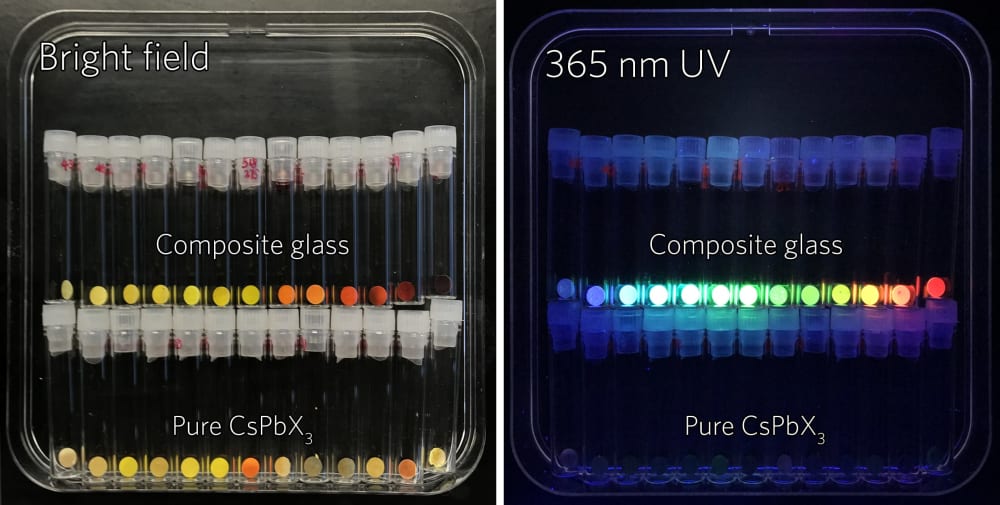
Lead-halide perovskites are highly sought-after semiconducting materials that can harvest sunlight and convert it into renewable electricity. Their low cost and high efficiency make them ideal for optoelectronic applications like solar cells and LEDs. They are, however, extremely sensitive to light, heat, air, and water—even airborne moisture would kill the current devices in minutes, severely hindering their upscale applications.
Our team developed a technology to wrap or bind the perovskites in porous glass, which is also known as zeolitic imidazolate framework glass. This procedure is crucial for stabilizing the perovskites, boosting their efficiency, and preventing hazardous lead ions from seeping out, leading a step forward in perovskite technology that was previously only achievable in a laboratory setting with a bone-dry atmosphere. More importantly, the new approach will provide more durable perovskite with tuneable optoelectronic properties and greater light emission efficiency, resulting in superior picture quality and strength for lighting LEDs as well as smartphone, television, and computer screens. In particular, the spongelike atomic arrangement gives the glass unique mechanical qualities, which would make the perovskite glass composite screens extremely tough and flexible, reducing brittleness-related breakage issues.
In modern society, quantum dot LED screens are considered the best choice for image display and performance. Our discoveries will pave the way for the development of unbreakable perovskite glass composite screens with crystal clear image quality.
-
Awards
-
 2022 Top 100 Entries
2022 Top 100 Entries
Like this entry?
-
About the Entrant
- Name:Jingwei Hou
- Type of entry:teamTeam members:Dr. Jingwei Hou, Xuemei Li
- Patent status:patented





